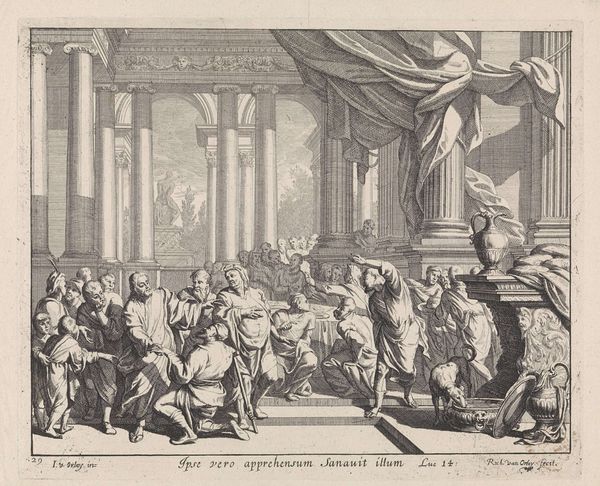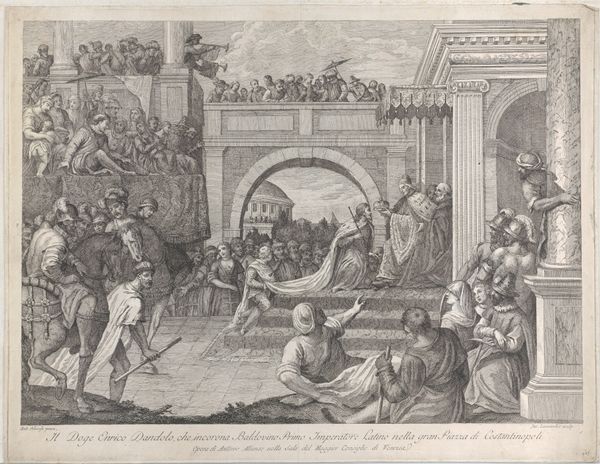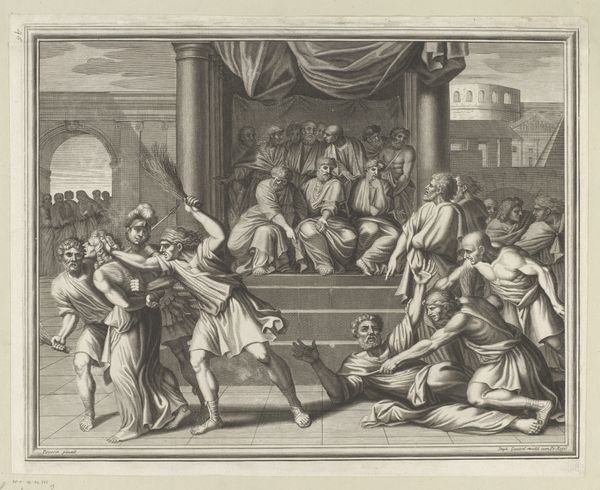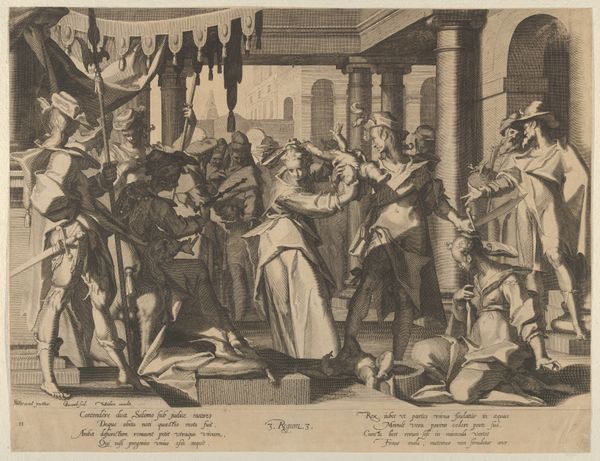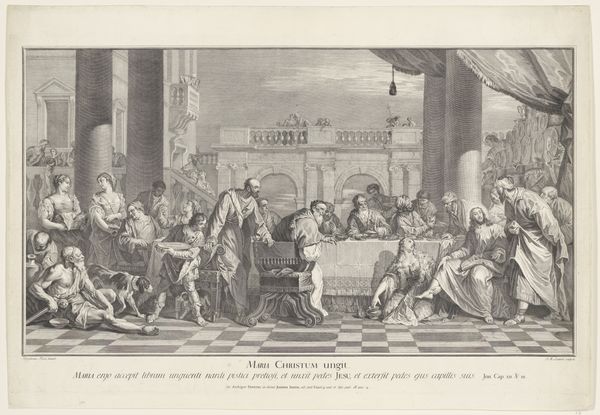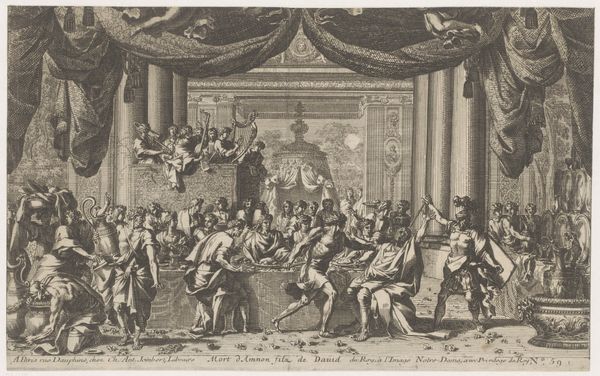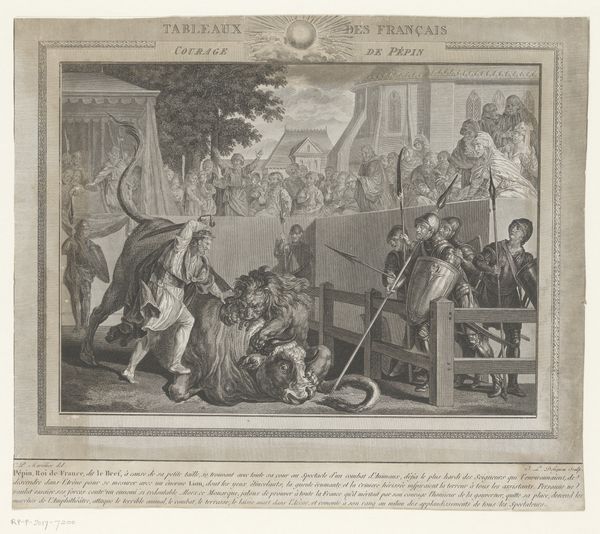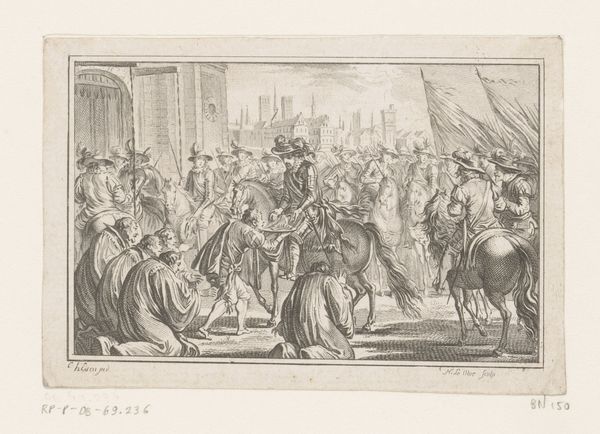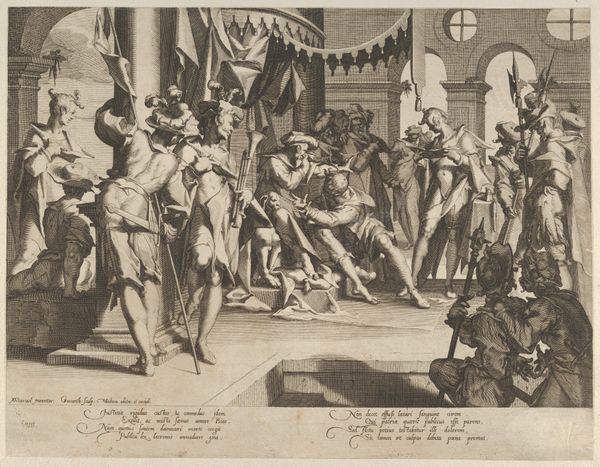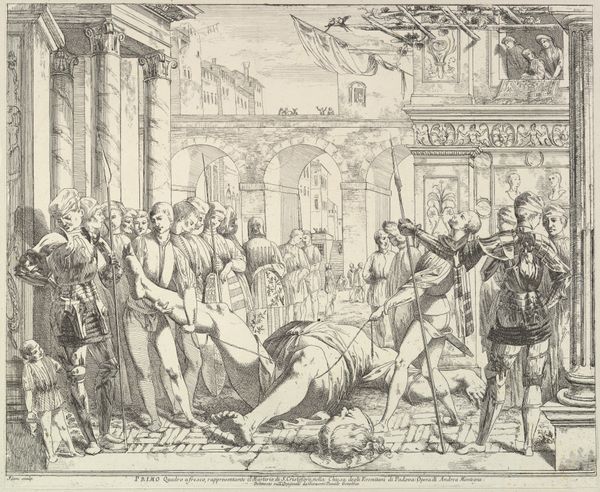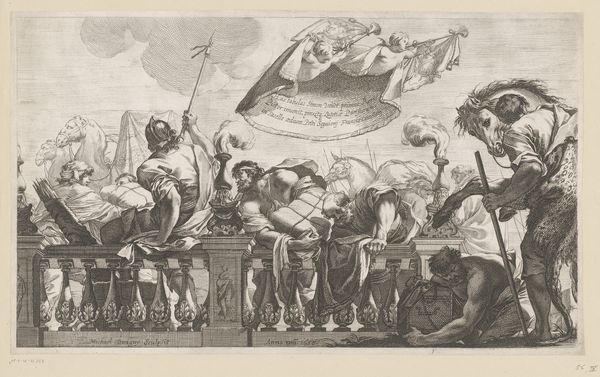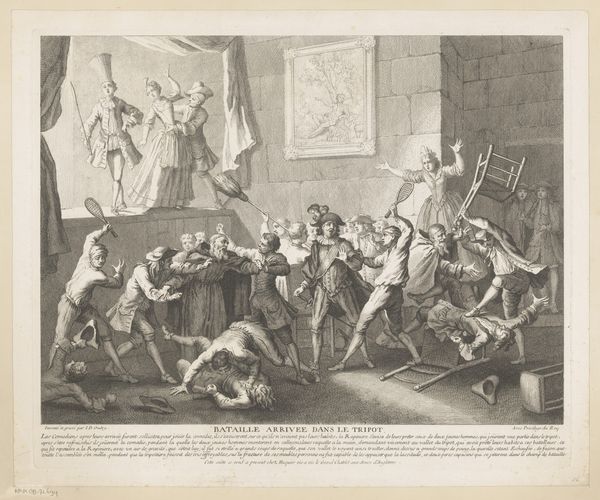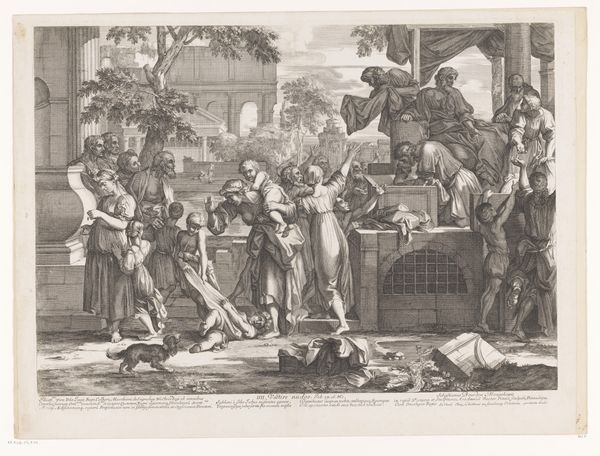
print, engraving
#
narrative-art
#
baroque
# print
#
old engraving style
#
figuration
#
line
#
history-painting
#
engraving
Dimensions: height 351 mm, width 446 mm
Copyright: Rijks Museum: Open Domain
Editor: This engraving, "Paulus en Silas geranseld," by Jean Lepautre, likely created between 1628 and 1682, depicts a very dramatic scene. There's a clear contrast between the figures being beaten and those observing from above. How do you interpret the imagery presented here? Curator: This piece resonates with layers of symbolism extending beyond the immediate violence. Notice the theatrical quality—almost baroque, right? The flailing limbs, the observers elevated on a dais... it’s all carefully constructed to evoke a visceral reaction. But consider what the act of scourging, as depicted here, represents symbolically in a religious context. What do you see? Editor: I guess I see a perversion of justice. The people observing are passively watching it unfold, they're even sitting in judgement over this inhumane act. Curator: Exactly. Scourging carries deep significance within Christian iconography. Beyond physical suffering, it symbolizes purification, sacrifice, and the path to spiritual transcendence. Think of the cultural memory embedded within this image - linking to earlier depictions of martyrdom. The Romans associated the dais with justice but here justice is perverted. The emotional charge isn't solely about depicting pain; it invokes a complex narrative about faith, power, and resilience. Editor: So the artist uses recognizable visual cues to trigger certain emotional and intellectual responses? Curator: Precisely! The image acts as a kind of cultural shorthand, instantly conveying deeper meanings to those familiar with these symbols. The placement of Paul and Silas suggests endurance despite oppression. They are being purged by injustice while everyone else turns away. Do you agree? Editor: Yes! I’d been focusing on the literal action, but it’s so much richer when viewed through the lens of symbolic language. Curator: Indeed, this piece isn't simply documenting a historical event; it's prompting contemplation on enduring themes of faith, injustice, and cultural memory.
Comments
No comments
Be the first to comment and join the conversation on the ultimate creative platform.
